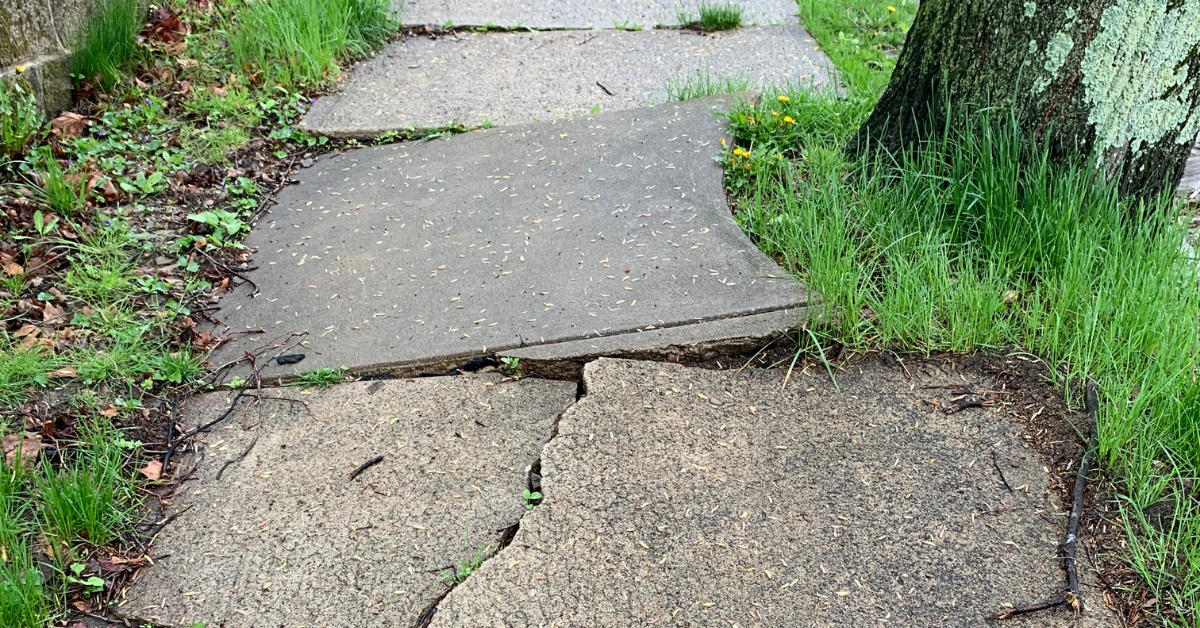By Al Adamsen | Future of Work Advisors
| Myth 1: Ai Is Transforming Jobs at Similar Speeds
When it comes to artificial intelligence (Ai), a dangerous oversimplification is making its way into boardrooms and executive strategy sessions: the belief that Ai is transforming all jobs at similar speeds and to similar magnitudes. It’s not.
Despite this, assumptions of worker productivity gains are being made with little understanding of the true implications Ai is having on the very nature of work in specific job families. The reductions in force we’re seeing in many organizations are thus adversely impacting the work experience of those who remain. This creates significant short-, mid-, and long-term costs, many of which are hidden before a crisis shows itself. Any recent stories come to mind?
To debunk the myth and move past it requires an appreciation of nuance that few leaders have the patience to understand. “We just gotta go,” they say. While I appreciate that leaders have to move fast in a fast-moving world, the question arises: When making quick decisions that’ll have big repercussions, what are you and your fellow leaders basing those decisions on? Hopefully, you’re setting up a process that provides the insights and ideas that will enable wise decisions – ones that reduce risk and increase the probability that the decisions reap the desired return. Have you?
If such a process is set up, it’ll undoubtedly address what I call the dimensionality of change. In essence, this means that change – for example, the impact of Ai – will be different in different job families, locations, and regions. Making broad assumptions does not appreciate this dimensionality. Particularly as we explore the impact Ai will have on humans at work, measuring, analyzing, and understanding the nuances down to the job family, role, and task is critical.
Just as no two roles are identical in scope, creativity, or context, no two roles are experiencing Ai’s impact in exactly the same way. Some job families – like those in data entry, customer service, or legal review – are being changed quickly and significantly. Others, such as roles in the trades, healthcare, and business strategy, are experiencing a slower, more subtle evolution. In such roles, day-to-day tasks are evolving rather than their work disappearing.
This reality matters. Leaders must stop asking, “What jobs will Ai eliminate?” and start asking, “How is Ai reshaping work within each job family, and how can we build a sustainable, adaptable organization that leverages Ai while honoring the human experience of our employees?”

| Recent Research Confirms: Ai’s Impact Is Uneven
Young Professionals Are Being Displaced Faster
A growing body of research – including studies from Stanford’s Digital Economy Lab and Revelio Labs – reveals that Ai is impacting early-career roles far more rapidly than others.
- Employment for workers aged 22–25 in Ai-exposed roles dropped up to 20% between 2022 and 2025.
- Meanwhile, demand for senior roles in the same job families increased by 6–13%.
- Entry-level job postings in fields like customer service, data ops, and legal support fell by 40% or more.
This disproportionate impact underscores the need for job-family-level visibility and role-specific planning.
Generative Ai Is Creating Opportunity – But Not for Everyone
According to Lightcast, demand for generative Ai skills has exploded:
- From just 55 job postings in 2021 to nearly 10,000 in 2025
- Non-tech roles using GenAi tools have grown 9×
- Roles requiring Ai literacy now command an average salary premium of $18,000
However, these roles are concentrated in mid-to-senior tiers of the workforce. Early-career access to Ai-enhanced opportunities remains limited.
White-Collar Roles Are Being Flattened
Contrary to the narrative that Ai only impacts blue-collar work, Revelio Labs and Draup data show:
- A 12.7% YoY decline in job postings for roles like business analysts, project managers, and strategy associates
- These roles are often being consolidated, with Ai tools absorbing key tasks rather than creating new upward career paths
Worker Sentiment Is Declining – and It’s Costly
Ai-related change is not just technical – it’s emotional.
According to Revelio sentiment data and the Worker Angst Index from Fractional Insights:
- Employees facing Ai-related uncertainty are 33% less productive
- Disengagement risk rises 5.5×, and regrettable turnover jumps 7×
- For a 10,000-person org, the cost of this angst can top $300 million in lost productivity annually
Global Forecasts Validate Uneven Change
The World Economic Forum’s Future of Jobs Report 2025 forecasts:
- 92 million jobs displaced globally by 2030
- 170 million jobs created, but unevenly
- Ai-specific roles (machine learning specialists, Ai ethicists, prompt engineers) are expected to create 11 million jobs – but also displace 9 million
The net gain masks a highly uneven disruption – one that demands more thoughtful analysis and planning.

| Why Dimensional Thinking Is a Leadership Imperative
What this all points to is a simple truth: there is no one-size-fits-all Ai strategy. Dimensional thinking recognizes that organizational change is not simple. Sorry leader, your job is to deal with complexity. Dimensional thinking appreciates this complexity, works to understand it and, in turn, helps make wise, well-informed decisions. With this in mind, from an executive level, there are four primary layers to consider when employing dimensional thinking:
|
Dimension
|
What It Illuminates
|
|
Task-Level Disruption
|
What specific tasks within a role or job family are being augmented, automated, eliminated, or otherwise changed by Ai?
|
|
Human Factors
|
How is Ai impacting humans at work? Is Ai elevating productivity and value or is it creating more work and noise?
|
|
Contextual Relevance
|
How do industry, geography, culture, and regulatory environments shape the pace and direction of change?
|
|
Decision Infrastructure
|
Is there a cross-functional, leader decision-making process that uses timely, relevant, and actionable insight about Ai’s impact on the workforce?
|
While People Analytics and Talent Intelligence can provide valuable macro-level trends, the richest insights often come from the people actually doing the work. What a thought, right? Listening to and learning from frontline employees, team leads, and functional experts will reveal where the friction lies, what tools are helping, hindering, or simply not relevant, and what is believed to be most helpful moving forward.
The takeaway: Understanding what’s happening at the job-family, role, and tasks levels is no longer a “nice to have” – it’s a strategic necessity.
| What to Do Next
To navigate this complexity amidst ongoing external change, forward-thinking organizations are going beyond People Analytics, Workforce Planning, Talent Intelligence, and EX/Employee Listening strategies. They’re bringing these together to do the following:
- Conduct a Dimensional Analysis of the Workforce: Go beyond titles and headcount. Look at the tasks, tools, and team structures within and across job families. Identify where Ai can enhance, where it might hinder, and where new capabilities will be needed.
- Include Voices from Across the Organization: Top-down projections miss critical details. Invite employees at every level into the conversation. Create listening tours, cross-functional workshops, and/or use technology that captures employee perspectives and ideas on Ai—both how it's being experienced now as well as how it can be best experienced in the future.
- Use Job-Family-Level Insights to Guide Learning Investments: Training everyone on the same Ai tools or concepts is often wasteful. Instead, tailor learning pathways to each job family based on current tasks and future plans. Focus on both technical upskilling (Ai, agentic Ai, etc.) and human development (communication, creativity, decision-making, ethics, collaboration, etc.).
- Build Adaptive Ai Adoption Plans: Don’t bet the farm on a single tool or trend. Build flexible, test-and-learn strategies that let you pilot solutions in one area, measure impact, and scale thoughtfully.
- Honor Human Potential and Constraints: Not all people will learn at the same pace, adopt new tools with ease, or feel empowered by Ai. That's okay. Respect the human experience, offer support, and empower with empathy, patience, and persistence. Positive, productive people will find a way… at their own pace.
If you’re committed to building a future-ready, human-centric, adaptable organization in the age of Ai, then these five considerations are essential.

| A Call for Conscious Leadership
The truth is, Ai isn't impacting all jobs at the same speed – and pretending otherwise puts people, performance, and purpose at risk.
If your leadership decisions are based on generalities, you’re likely missing what matters most – the human-level reality of change. But when you lead with dimensional thinking, you create room for insight, agency, and growth. We’re not facing a single future of work. We’re facing an infinite number of futures, each shaped – if not outright created – at the intersection of technology, humanity, and leadership.
To learn more about the other Myths click here. And to learn how to assess your organization’s adaptive readiness and, in turn, build executive decision-making processes rooted in timely, relevant, and actionable insight, follow and connect with me here on LinkedIn. Finally, be sure to subscribe to the Future of Work Advisors Newsletter.